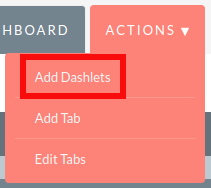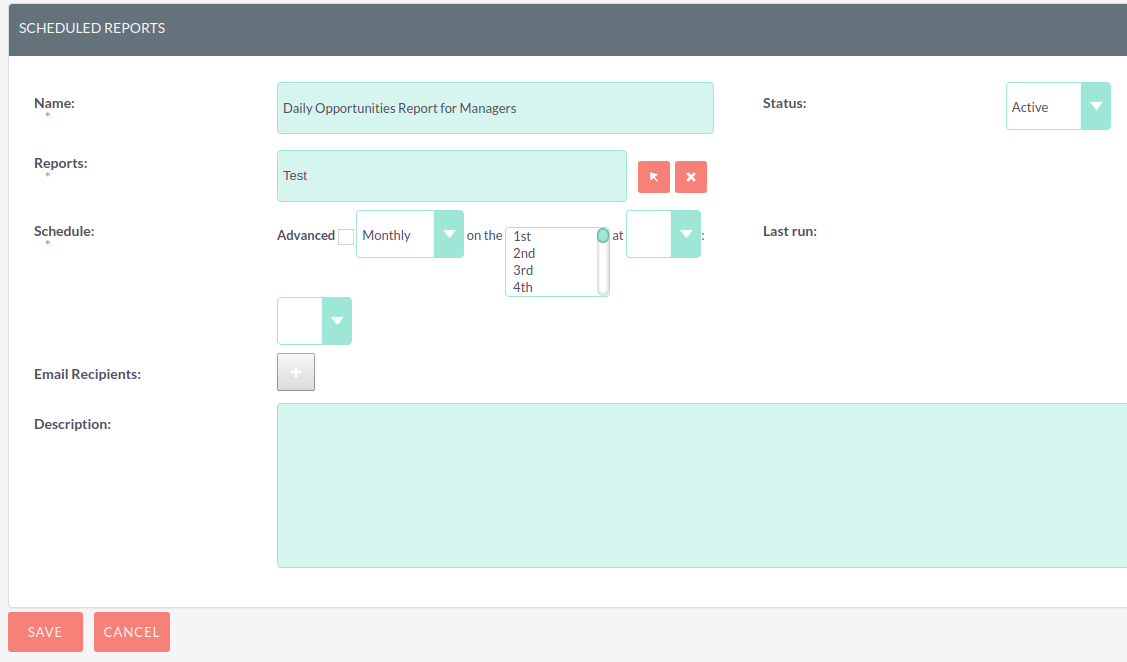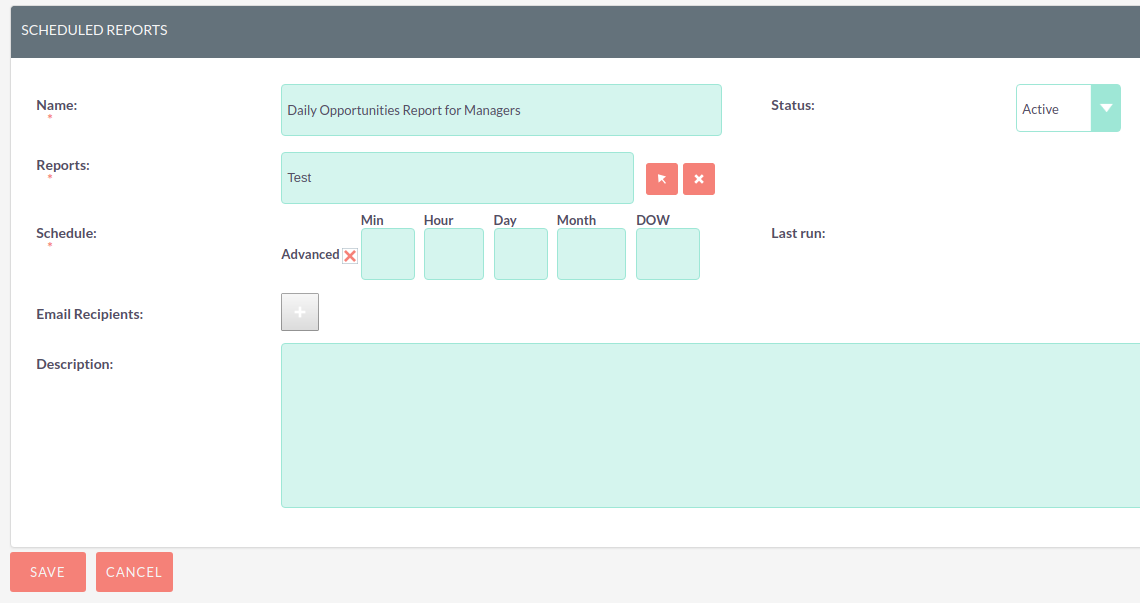Reports
Reports
Advanced Open Reports (AOR) is the reporting module within SuiteCRM. AOR can be accessed by clicking the 'Reports' link within the navigation menu. The reporting module allows users to report on CRM data from any module and has many features to display key information quickly.
Creating Reports
To create a report, hover over the Reports module on the navigation bar and select 'Create Report'.

You will be presented with the report Edit View. To obtain a list of fields to add to the report, you have to select a module from the Report Module drop down.

Adding Fields
Once you have selected a Report Module, the list of fields available will display on the left panel. You can add fields to the 'Fields' section of the report by expanding the module you wish to select fields from and then drag and drop those fields into the field section.

Once you have added fields to a Report, there are multiple options to configure for those fields:
-
Display – True or false option. Allows you to specify whether this field should be displayed on the report, or hidden. Users may wish to add fields to perform a function/sort/group/total but may not wish to show this on the Report.
-
Link – True or false option. Allows you to make the field a link. Setting this option to true will hyperlink the field on the Detail View of the report, allowing you to click on the record. This will navigate you to the appropriate record. For example, linking the Opportunity Name will take you to the Detail View of that Opportunity.
-
Label – This is the label that will be displayed for the Column/Field on the Report. You can change the label from the default to any alphanumerical value.
-
Function - Provides five options: Count, Minimum, Maximum, Sum and Average. Allows you to perform functions on alphanumerical fields. Users may wish to calculate the average Opportunity Amount, or Count total Opportunities at a given Sales Stage.
-
Sort – Ascending or Descending. Allows you to select whether to sort the field/column descending or ascending. This can be done for all fields.
-
Group – True or false option. Allows you to group by this field. For example, you may wish to group by Sales Stage when reporting on an Opportunity.
-
Total – Provides three options: Count, Sum and Average. This allows users to perform total calculations on numerical fields. This is useful for financial reporting such as the total value of all Opportunities at a given Sales Stage.
Adding Conditions
Once you have added the fields to your Report, you can add condition lines to the Report. You can add conditions with the same procedure as adding fields. Using the drag and drop functionality, you can drag fields into the 'Conditions' area which will add the field and allow you to specify the condition for that field.
Charts
You can add charts to Reports. Charts provide a visual representation of the Report data to you. In some scenarios, or for particular users, visual aids such as charts can assist quicker analysis and better understanding.
Chart Types
There are six types of chart that the user can select to display Report data. These are:
-
Pie Chart
-
Bar Chart
-
Line Chart
-
Radar Chart
-
Stacked Bar
-
Grouped Bar
To add a chart, you can click the 'Add Chart' button, below the Conditions section within the Report Edit View.

Once you click add chart, you will be presented with the option to specify the following information:
-
Title – Allows the user to specify the title for the chart. This will show on the Detail View of the Report and also on the dashlet chart.
-
Type – This allows the user to select from one of the six chart types detailed above.
-
X Axis – Allows the user to select the column that should be used for the X Axis.
-
Y Axis – Allows the user to select the column that should be used for the Y Axis.

Once you have specified the chart details, save the Report. This will display the chart on the Detail View of the Report, below the list of records returned.
Reports Dashlets
You can display a Report within a dashlet. It is possible to view multiple Report results as you can add multiple Report dashlets and select different Reports within each dashlet. To do this, add the Reports dashlet to your homepage.


Once you have added the dashlet, you need to select the Report you wish to display within the dashlet. To do this, click the pencil icon to edit the dashlet.

This allows the user to select the Report they wish to display within the dashlet.

Once you have selected the Report, click Save. This will update your Reports dashlet to show the results of the Report.
For full details on adding and managing dashlets, see the Dashlets section of this user guide.
Reports Charts Dashlets
You can specify to only select to display a chart for Report dashlets. To do this, edit your Report dashlet and select the 'Only use charts' option. This will then list all charts you have created for this Report.

Select a chart or multiple charts and click Save. This will display the results in the chart selected.

Scheduled Reports
You can schedule reports to be automatically run and emailed to the required Contact(s). This allows users to schedule reports to be sent to Managers or Team Leads either Daily, Weekly or Monthly. To create a Scheduled Report, you can click the 'Create' option within the Scheduled Reports Sub-panel on the Detail View of the Report. You can also select existing Scheduled Reports to relate to the Report.

Once you have clicked 'Create', there are options to set for the Scheduled Report. Give the Scheduled Report a relevant name. In this example, we will use 'Daily Opportunites Report for Managers'.

You can select the 'Advanced' option for report scheduling. This will provide a cron notation style option. This is best suited for System Administrators or advanced users.

Once you have entered a name and selected a schedule, click Save.

Once you save the Scheduled Report record, this will display in the Scheduled Reports subpanel within the Detail View of the Report.

You can view when the Scheduled Report last ran by viewing the 'Last Run' column/field on the sub-panel. This shows in a date/time format.